10 Ways to Mix and Match Tiles in the Bathroom
Why use the same tiles on all bathroom surfaces when combining their differences looks so good?
Laura Wheat
15 August 2019
Houzz UK Contributor. Freelance Journalist and interiors obsessive, newly ensconced in a handsome Edwardian semi on top of a hill.
Houzz UK Contributor. Freelance Journalist and interiors obsessive, newly ensconced... More
For tile fans, such as myself, the more tiles the better. But while I’d happily cover every surface, there are certain factors to consider when pairing tiles on walls and floors. As tiling large areas, whether in a bathroom, kitchen or any other space, requires a sizeable investment, it’s worth getting hold of some samples and experimenting with how tiles of different sizes, shapes and patterns work together. These 10 tips should give you some pointers on ways to combine tiles and the effects you can hope to achieve.
2. Pair pattern with plain
Restrict your use of patterned tiles to one surface – either the floor or a feature wall. Here, contemporary hexagonal tiles take centre stage, while the large-scale rectangular wall tiles provide a light-enhancing glossy background.
Find a renovation professional near you
Restrict your use of patterned tiles to one surface – either the floor or a feature wall. Here, contemporary hexagonal tiles take centre stage, while the large-scale rectangular wall tiles provide a light-enhancing glossy background.
Find a renovation professional near you
3. Play with scale
One of the most important tips for maximising tile-mixing prowess is to create balance by choosing one small-scale pattern and one large. In this bathroom, three different tile types are combined successfully: tiny hexagonal mosaics on the bath and walls, medium hexagonal tiles on the basin surround and large rectangular tiles on the floor. The monochrome palette helps to create a harmonious whole.
One of the most important tips for maximising tile-mixing prowess is to create balance by choosing one small-scale pattern and one large. In this bathroom, three different tile types are combined successfully: tiny hexagonal mosaics on the bath and walls, medium hexagonal tiles on the basin surround and large rectangular tiles on the floor. The monochrome palette helps to create a harmonious whole.
4. Treat stone as a neutral
Floor-to-ceiling subway tiles with grey grout make a statement in this super-sized shower. To soften the graphic grout lines, as well as to create cohesive design, pair with natural grey stone. This adds visual interest to a neutral pattern that doesn’t try to compete.
Floor-to-ceiling subway tiles with grey grout make a statement in this super-sized shower. To soften the graphic grout lines, as well as to create cohesive design, pair with natural grey stone. This adds visual interest to a neutral pattern that doesn’t try to compete.
5. Combine matt finishes
For a bathroom with tactile appeal, choose two types of matt tiles and break up large areas with an alternative surface, such as this exposed brick, or with plain painted walls.
For a bathroom with tactile appeal, choose two types of matt tiles and break up large areas with an alternative surface, such as this exposed brick, or with plain painted walls.
6. Juxtapose matt and gloss
Get away with combining similarly sized tiles and busy patterns by choosing one matt style and one shiny. These high-gloss, bevelled-edged subway tiles work beautifully with the soft waxy-looking finish of the monochrome floor tiles.
Get away with combining similarly sized tiles and busy patterns by choosing one matt style and one shiny. These high-gloss, bevelled-edged subway tiles work beautifully with the soft waxy-looking finish of the monochrome floor tiles.
7. Draw attention with grout
For an easy mix that works in any space, take two tile designs in the same solid colour but different shapes and let the grout lines form the pattern.
For an easy mix that works in any space, take two tile designs in the same solid colour but different shapes and let the grout lines form the pattern.
- With contrasting grout: For a pronounced effect, choose a contrasting shade, like the dark grey grout pictured here, and use it between white metro tiles and tiny hexagonal mosaics.
- With matching grout: If you like your tiling to create subtle interest but prefer the overall look of your bathroom to make less of a statement, use matching grout.
8. Introduce subtlety
This bathroom features the same combination of tile types as the previous image. By using white grout, a very subtle effect has been achieved, making a huge difference to the finish and feel of the space.
Browse more bathroom ideas
This bathroom features the same combination of tile types as the previous image. By using white grout, a very subtle effect has been achieved, making a huge difference to the finish and feel of the space.
Browse more bathroom ideas
9. Be consistent with pattern
Use tiles in different sizes and colours, but keep the shape consistent for a harmonious effect. This bathroom includes rectangular tiles in two different colours and two different sizes, but by maintaining the same brick pattern on each surface, a visual connection has been created between the planes.
Use tiles in different sizes and colours, but keep the shape consistent for a harmonious effect. This bathroom includes rectangular tiles in two different colours and two different sizes, but by maintaining the same brick pattern on each surface, a visual connection has been created between the planes.
10. Limit your colour palette
For a bathroom with a lot of different surfaces, minimise competition between patterns by choosing a restricted colour palette. By sticking to grey and white throughout, this shower scheme feels elegant and cohesive.
Tell us
How have you mixed and matched tiles in your home? Share your tips and photos in the Comments section.
For a bathroom with a lot of different surfaces, minimise competition between patterns by choosing a restricted colour palette. By sticking to grey and white throughout, this shower scheme feels elegant and cohesive.
Tell us
How have you mixed and matched tiles in your home? Share your tips and photos in the Comments section.
Related Stories
Small Spaces
8 Ways to Make a Shared Bathroom Work
A bathroom for two? Give yourselves enough elbow room to live side by side even in a small space
Full Story
Bathrooms
8 Sneaky Ways to Disguise HDB Piping
By Disa Tan
Though these bathroom pipes are in plain sight, they certainly aren't unsightly
Full Story
Bathrooms
How Much of My Bathroom Should I Tile?
By Kate Burt
When it comes to exactly where to have tiles in your bathroom, there are several options depending on budget and looks
Full Story
Bathrooms
8 Inspiring Bathrooms That are 4 Square Metres or Less
See how eight designers saved space in these teeny-tiny bathrooms without compromising on style
Full Story
Bathrooms
12 Space-Expanding Tricks for Any Bathroom
By tidgboutique
Stay the same size but look bigger with these designer tips for your bath space
Full Story
Bathrooms
Blue Makes a Refreshing Splash in These 10 Bathrooms
By Janet Paik
Get ideas for adding this calming hue through striking tile designs, wallpaper and vanities
Full Story
Colour
Powder Room Palettes: 10 Pinks That Pop
See how paint, tile and wallpaper in shades of pink prettify these rooms
Full Story
Bathrooms
10 Bathrooms With Statement-Making Tile
Tiles with bold patterns, surprising textures and rich colours make these bathrooms stand out
Full Story
Bathrooms
How to Design a Beautiful Bathroom You’ll Want to Spend Time In
By Kate Burt
Want to love your bathroom the way you love your living room or bedroom? Here’s how...
Full Story
Bathrooms
Best of the Week: 29 Bathrooms With a Stylish Splash of Colour
Whether pale or bold, these bathrooms will uplift with their happy hues
Full Story

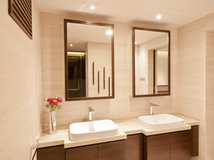
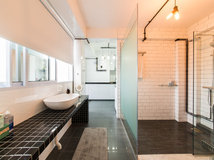
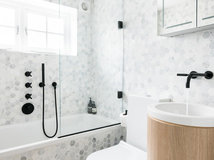

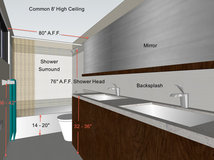


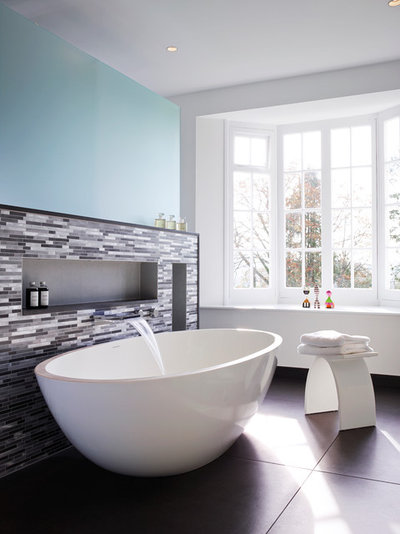
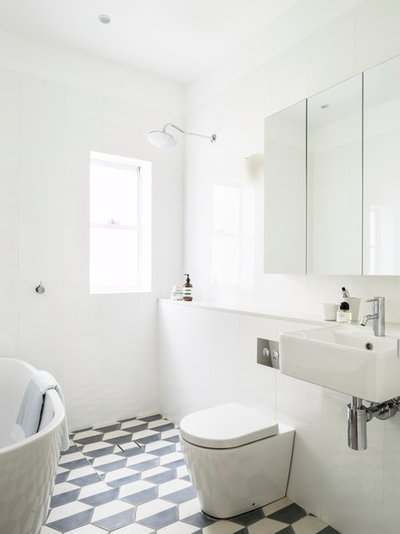
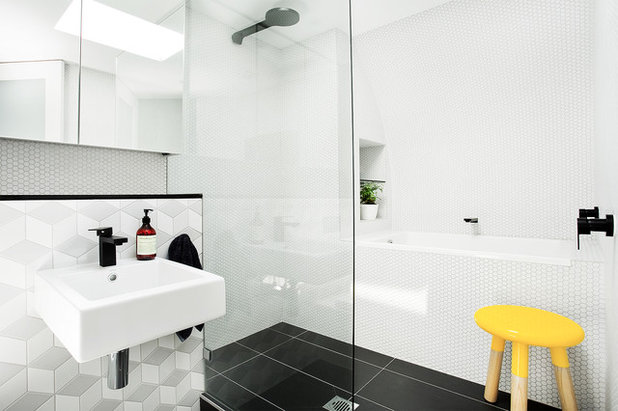
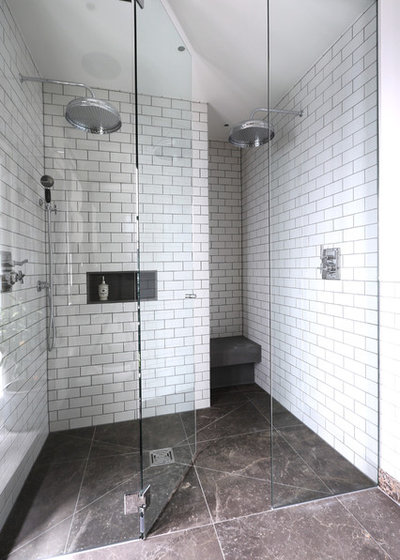
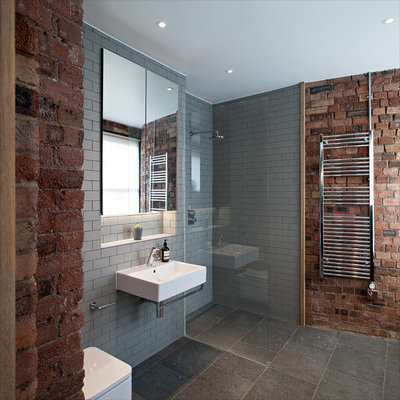

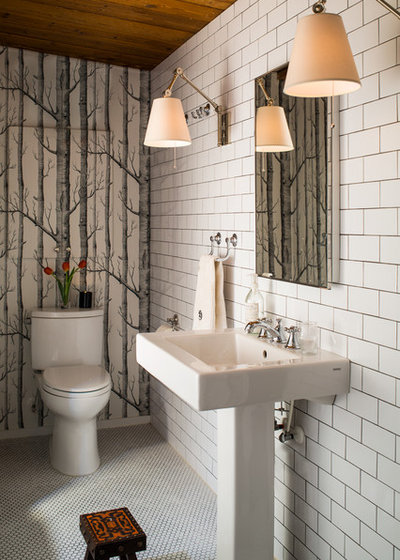
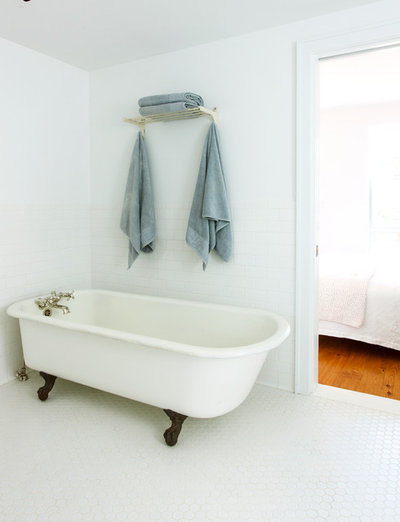
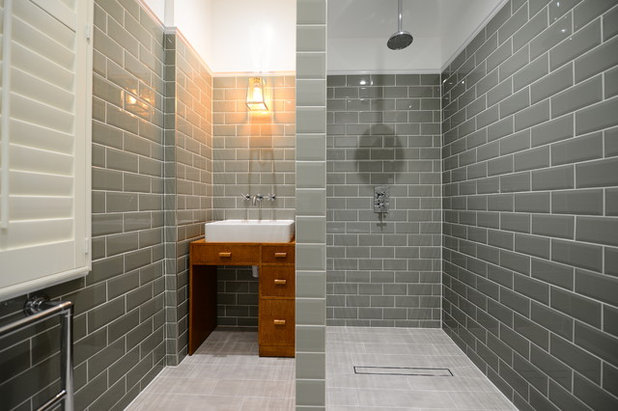
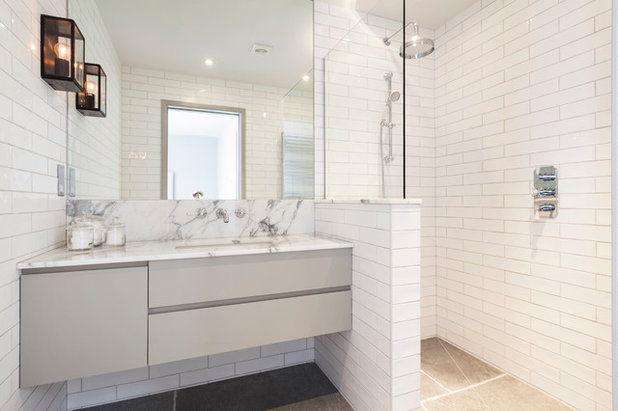
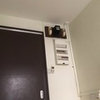
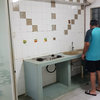
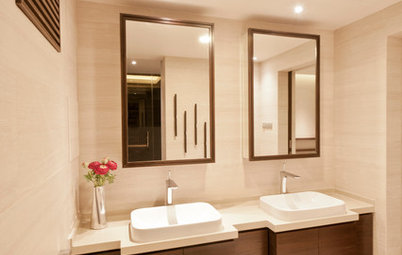
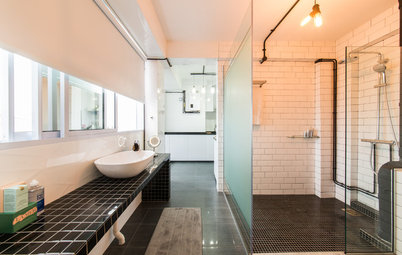
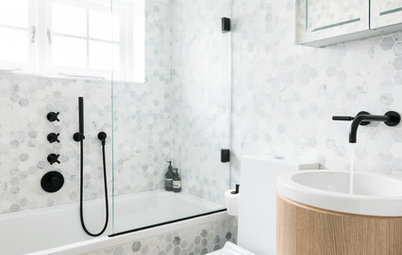
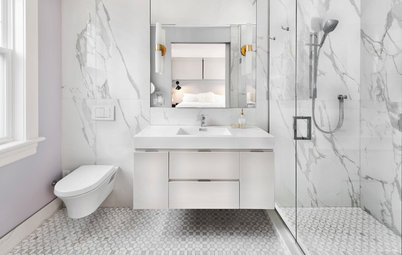
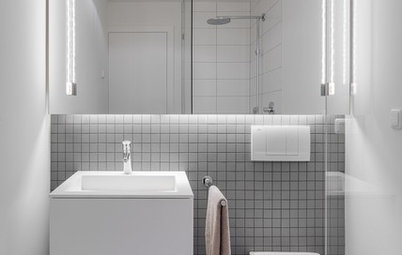
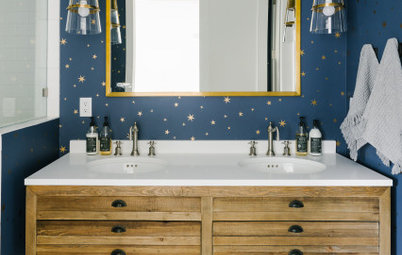
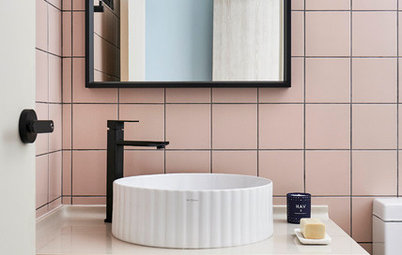
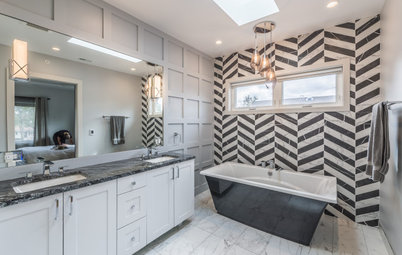
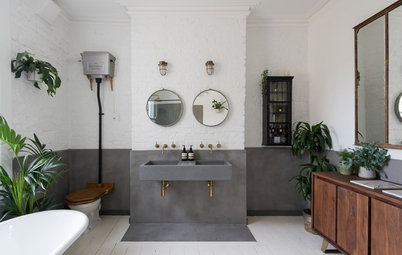
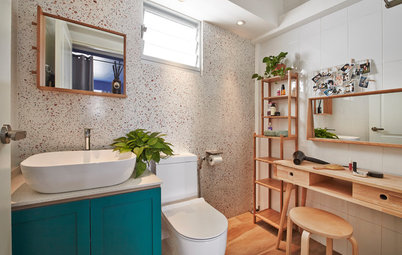
A recent new build primary bath we did in NW Chicago. We used the same dark grey (black-ish) tile in 3 different patterns throughout (herringbone, vertical stacked, horizontal stack), complimented by a marble look black/white/grey porcelain tile.
I am building a new home and in the master bath. I am planning to put the wood tile in the shower area and the marble look tile on the remaining bathroom walls a floor. Pairing it with gold or bronze fixture
This looks terrific. What subway tile did you use?